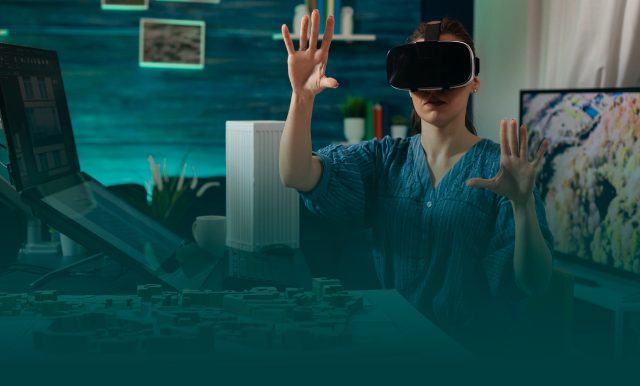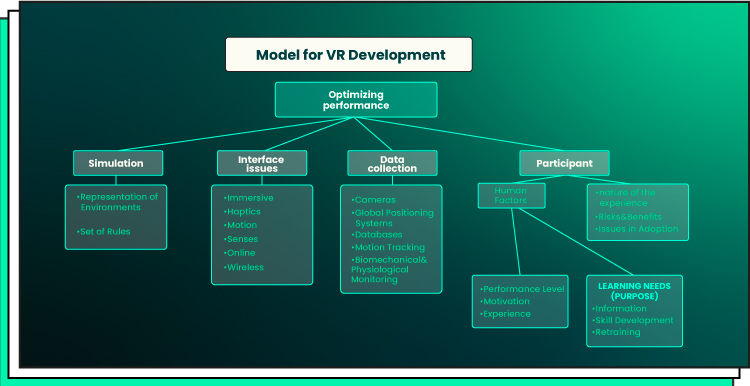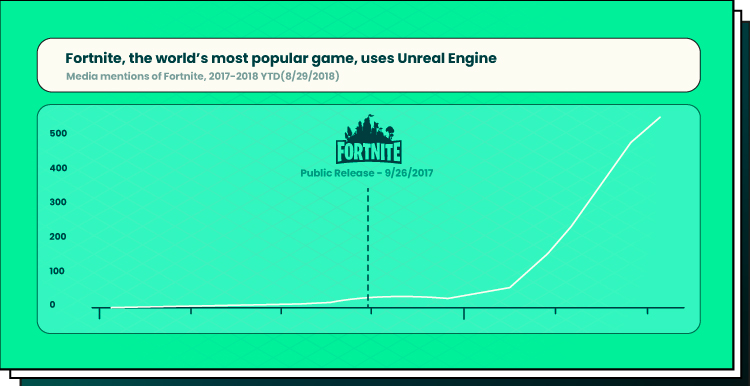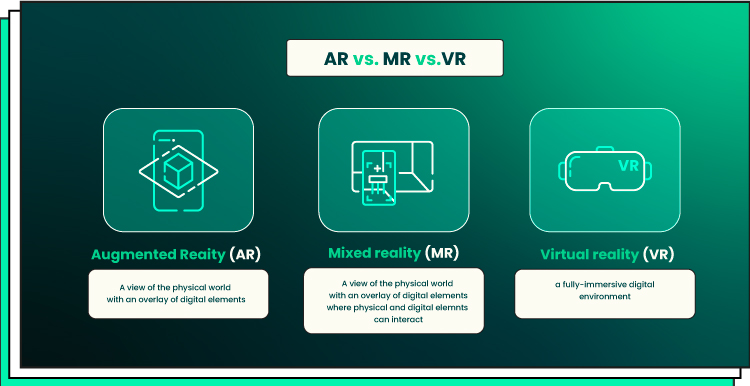Ready to step into the future of customer experience? Virtual reality (VR) isn’t just for gaming anymore, it’s quickly becoming a must-have for businesses that want to wow their audience and stand out in a crowded market.
Imagine letting your customers walk through a showroom without leaving home, or offering interactive product demos that feel like real life. That’s the power of VR development, and it’s already transforming how companies connect, engage, and sell.
The numbers speak for themselves: the VR industry is growing fast, with over 29,000 companies in the space and a projected market value of $30 billion by 2029, growing at a CAGR of 19.1%. In short, this isn’t a trend, it’s a movement.
In this post, we’ll show you how forward-thinking founders can build impactful VR applications and tap into entirely new business opportunities. Let’s dive in.
Getting Started with Virtual Reality Development
VR programming is a unique field of software engineering focused on creating immersive user experiences. The development process encompasses a range of tasks, from developing VR tools and applications to designing 3D and virtual environments for educational or entertainment purposes. Each VR project requires a combination of technical skills, creative design, and user-centric thinking to bring virtual experiences to life.
The history of VR development is quite extensive. It can be traced back to the 1950s when Morton Heilig developed the Sensorama. This device featured 3D images displayed on a screen and interacted with by viewers. As technology improved throughout the 1960s, researchers began further experimenting with enhancing people’s experiences.
One of the first successful attempts at creating a VR experience was Ivan Sutherland’s “Ultimate Display” from 1965, which used a unique method of displaying 3D images on a 2D television screen and reactive sensors to track the user’s movements. During this period, other inventors, such as Myron Krueger, began exploring ways of using computer technology to create immersive virtual worlds.
By the 1990s, virtual reality had developed significantly, and gaming companies began incorporating VR into their products. This brought about the popularity of arcade games such as The Lawnmower Man and Virtual Racing, allowing players to experience simulation-based gameplay more realistically than ever before. With the advent of home computing in the mid-1990s, commercial game titles with built-in VR capabilities started appearing on consoles like Sega’s Genesis system. In 1995, Nintendo released Virtual Boy, their own attempt at delivering an immersive 3D gaming experience for home users. Although limited by the technology of the time, it marked an early step toward the modern VR game experience we see today.
Today, virtual reality technology has advanced significantly from its original form in the 1950s. Developers can now provide a highly realistic sense of depth and immersion thanks to advances in optical tracking systems, motion sensors, and sophisticated computer programming techniques.
Companies like HTC and Oculus have been leading this charge as they produce some of the most innovative devices available for consumers. These gadgets feature complex displays capable of replicating real-world environments with stunning accuracy. This has allowed users to explore digital spaces through interactive gameplay or simply enjoy 360-degree movies without ever having to leave their homes.
Curious how VR development can enhance your product or service? Let’s talk about how to bring your VR project to life, from idea to immersive experience.
Exploring the Core VR Technologies
VR technologies are diverse and varied, ranging from hardware such as headsets, gloves, controllers, and bodysuits to software like engines and platforms for creating immersive experiences. VR hardware typically comprises components like headset displays, external tracking systems, audio output devices, controllers (joysticks or handheld remotes), haptic feedback peripherals (vibrating gloves or bodysuits), and motion trackers. These pieces need to work together to provide a truly immersive experience. On the software side, asset creation plays a key role, involving the design of 3D models, textures, environments, and interactions that bring virtual worlds to life.
Headset displays are the most crucial part of any VR system since they allow users to see virtual worlds in 3D. They come in various shapes and sizes with features such as adjustable focus lenses and integrated speakers or headphones. Some popular headset models include Oculus Rift S, HTC Vive Cosmos Elite, Valve Index, Samsung Odyssey+, and Microsoft HoloLens 2. Tracking systems are also essential – they allow users to move around virtual spaces like they were there. As for controllers or input devices, these range from gamepads to hand-held remotes or even full-body vibrating suits for more intense experiences.
When it comes to software that powers the whole experience, many engines are designed specifically for VR development. Popular options include Unity 3D Engine, created by Unity Technologies in 2005. In addition, Fortnite, the VR game based on another popular VR engine Unreal, is currently the most popular game in the world.
Unity is one of the most popular game engines today, allowing developers to create stunning visuals, realistic physics, and complex artificial intelligence using its robust feature set.
Unity supports several platforms, including Windows, MacOS, iOS, Android, Xbox One, PlayStation 4, and Nintendo Switch. The engine also has an extensive library of asset packs that developers can use to quickly create their projects without starting from scratch.
Unreal Engine offers similar features to Unity but with even more power and flexibility for creating more detailed worlds. It’s especially popular for developing high-end AAA games due to its advanced graphical capabilities.
Other widespread VR engines include:
- CryEngine by Crytek;
- Source 2 by Valve Corporation;
- WebVR by Google;
- Amazon’s Lumberyard;
- ORBX Studio by Japan’s Nippon Ichi Software;
- Marmalade SDK by Marmalade Technologies Limited;
- Torque3D by Garagegames LLC.
The list can be expanded by other engines like Leadwerks Game Engine or Xenko Engine. These engines provide developers with all the tools they need to create realistic environments complete with physics simulations and advanced AI models, among other features.
Finally, when it comes to platforms where users can access these virtual experiences, some big names that immediately come to mind are:
- Oculus Rift owned by Facebook, which was one of the first major companies to enter this space;
- HTC Vive was created by HTC Corporation;
- PlayStation VR launched by Sony Interactive Entertainment in 2016, which was the first console-based Virtual Reality system on the market;
- Microsoft Mixed Reality was developed jointly by Microsoft Corporation and its partners;
- Google Daydream was created as an extension of Android OS back in 2016;
- Apple ARKit was developed exclusively for iOS devices like the iPhone XS Max & iPad Pro 11” 2018 series;
- Samsung Gear VR powered by Oculus Mobile SDK;
- Zeiss VR One powered by TrinusVR engine.
Top Tools and Frameworks for VR Development
The range of tools and frameworks for VR development projects is growing exponentially. Game engines such as Unity and Unreal Engine allow developers to create immersive experiences that can be played on various platforms. These engines offer powerful features such as 3D modeling, animation, physics simulations, shader creation, and more. Additionally, they are designed to be easily integrated with other development tools, such as Adobe Photoshop and Autodesk Maya.
VR development frameworks like A-Frame and Three.js allow developers to build out VR experiences from scratch without needing an expensive game engine license or knowledge of complex coding languages. Instead, these frameworks provide easy-to-use APIs and libraries that make it possible to quickly construct 3D environments in the browser. They also offer access to advanced features such as virtual reality cameras, sound spatialization, physics simulations, and more.
Furthermore, these frameworks are compatible with most major hardware solutions, including Oculus Rift, HTC Vive, Microsoft HoloLens, and Google Cardboard.
In addition to these two main categories of tools used for VR development projects, several other solutions can be employed when creating immersive experiences. For example, platforms like WebVR provide high-quality 3D content within the web browser, while libraries such as React VR focus on improving performance by streamlining the process of creating React applications within VR environments. Also, various plugins are available for popular game engines, enabling developers to quickly integrate their projects with existing hardware solutions like Oculus Go or Samsung Gear VR headsets.
Ready to build your own immersive experience? Let’s talk about the tools and tech stack that will bring your VR project to life, faster, smarter, and on budget.
VR Development: Tips, Tricks, and Best Practices
When developing VR experiences, focusing on a few key components can make all the difference between a forgettable demo and a truly immersive world that users want to explore again and again.
- VR Design: Think like your users. How will they move through the environment? What will catch their eye? Every object and detail should have a clear purpose and be placed thoughtfully to guide interaction naturally. Don’t forget about spatial sound; adding 3D audio can dramatically boost realism and pull users deeper into your virtual world.
- Performance: Smooth performance is non-negotiable. Compress your assets efficiently and optimize everything so your VR environment runs at a steady frame rate. Lag or dropped frames aren’t just annoying; they can cause discomfort or motion sickness. Prioritize fluidity to keep users comfortable and engaged.
- User Experience (UX): Real users are your best testers. Before launch, get your target audience hands-on with your VR app. Gather honest feedback about usability and immersion, then iterate based on what you learn. Multiple rounds of testing will uncover hidden issues and open doors to new ideas, helping you craft an experience that feels natural, intuitive, and captivating.
What’s Next? The Future of VR Development for You
As VR hardware becomes more powerful and affordable, high-quality virtual experiences will become accessible to a wider audience. This shift will likely spark the creation of specialized devices tailored to various immersive content types, from gaming and education to medical training simulations. Devices like the Meta Quest are already leading the charge by delivering standalone VR experiences that combine impressive performance with user-friendly accessibility.
On the software side, increasingly sophisticated development tools will simplify the creation of complex and engaging VR experiences, enabling developers to build on existing foundations instead of starting from scratch every time.
The future of VR development is brighter than ever, with emerging technologies and trends promising to make VR apps even more immersive and engaging. Let’s explore some of the key advancements shaping what’s ahead:
Haptic Feedback
Haptic feedback technology adds a tactile dimension to VR by using devices that vibrate or stimulate users electronically in response to their interactions with virtual objects. This can range from gentle vibrations simulating a touch to intense sensations mimicking extreme temperatures or impacts. By enabling users to feel their virtual environments, haptic feedback greatly enhances realism and immersion.
Eye-Tracking
Eye-tracking technology tracks where users focus their gaze within the VR environment. This insight allows developers to craft dynamic, personalized content that responds to individual interests. Moreover, eye-tracking provides valuable data on user engagement, helping developers fine-tune experiences for maximum impact.
Mixed Reality (MR)
Mixed reality blends virtual objects seamlessly into the physical world, allowing users to interact with them naturally as if they were truly present. This technology opens up exciting possibilities, from innovative gameplay mechanics to immersive educational applications, and is poised to be a major driver in the evolution of VR design.
Additional trends to watch
-
Gesture controllers and voice commands: Replacing traditional input devices to create more intuitive interactions.
-
Social features: Adding shared avatars and multiplayer capabilities to foster connection within virtual spaces.
-
Sensory stimulators: Introducing wind, scent, and other sensory inputs to deepen immersion.
-
AI-driven NPCs: Creating non-player characters that respond naturally to player actions, making virtual worlds feel more alive.
-
Cloud computing: Platforms like Amazon Sumerian offer scalable, low-latency computing power via the cloud, enabling large-scale online VR games and simulations without reliance on local hardware.
Final Word
As technology evolves and becomes more accessible, the way we interact with and explore our environment changes drastically. Ultimately, VR development has the potential to revolutionize how we communicate, travel, learn, and play. It’s a cutting-edge evolution that will change how we experience the world around us for years to come.
As developers continue to innovate and find a way to make this technology accessible for all types of users, one thing can be said: the future of virtual reality technology looks bright indeed.
Let’s create more exciting technologies together. We help companies across the globe bring their innovative ideas to reality. Contact Forbytes today if you wish to improve your business strategy and develop high-tech solutions.

Our Engineers
Can Help
Are you ready to discover all benefits of running a business in the digital era?

Our Engineers
Can Help
Are you ready to discover all benefits of running a business in the digital era?












